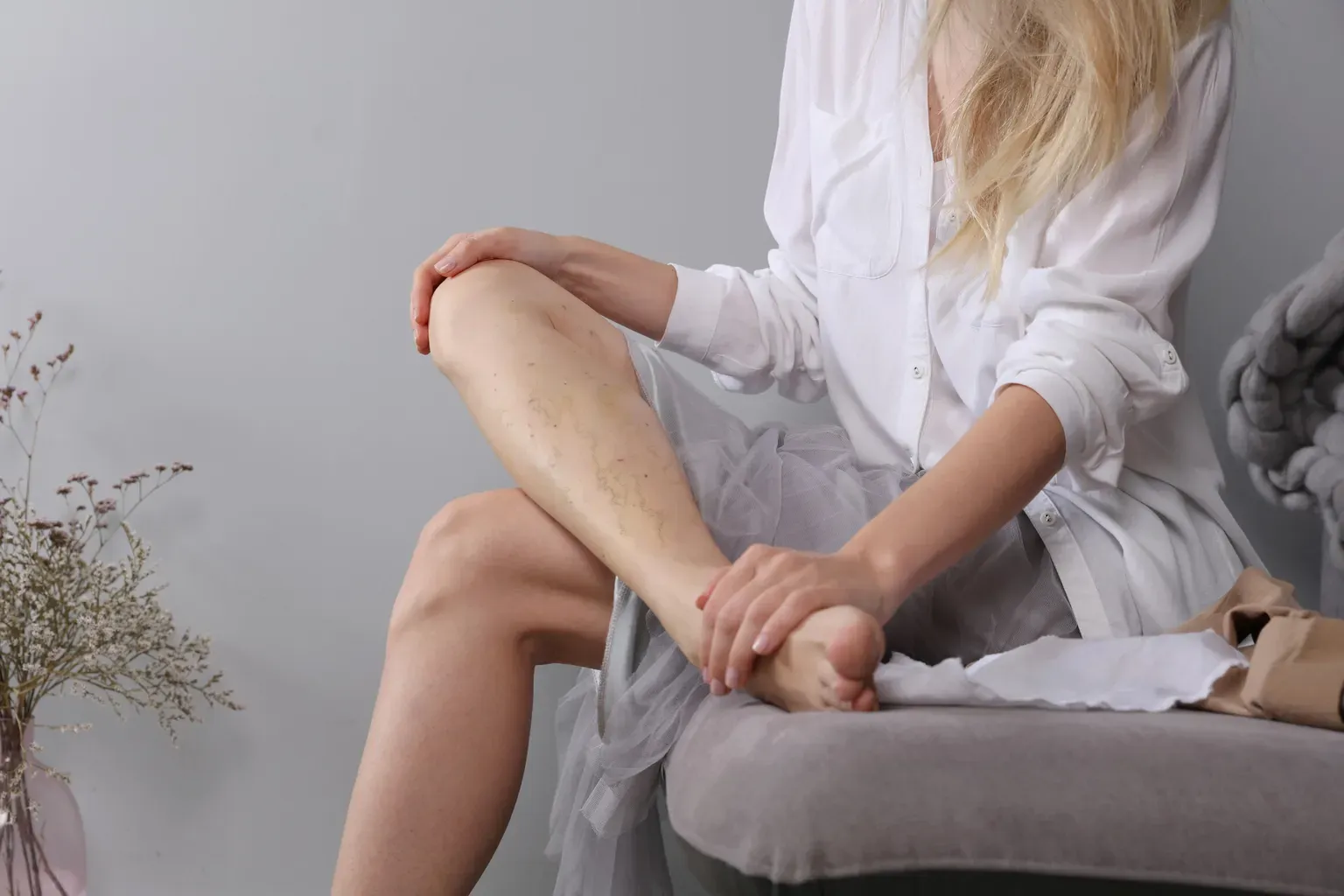Do your legs start to ache, cramp, or feel heavy when you walk — only to feel better when you rest? You might chalk it up to aging or fatigue, but recurring leg pain during activity could be a warning sign of vascular problems. Specifically, it may indicate a condition known as Peripheral Artery Disease (PAD) — a common but often overlooked circulatory issue.If you’re experiencing vascular pain in your legs when walking, here’s what you should know about the causes, warning signs, and when to seek help.
What Is Vascular Pain?
Vascular pain occurs when blood flow through your arteries or veins is restricted or blocked. Your muscles need oxygen-rich blood to function, especially when you’re moving. If circulation is limited, your legs can’t get enough oxygen — resulting in pain, tightness, or cramping with activity.
Common Causes of Leg Pain While Walking
1. Peripheral Artery Disease (PAD)
PAD is one of the most common causes of vascular pain during walking. It occurs when plaque builds up inside your leg arteries, narrowing them and limiting blood flow.
Symptoms include:
-
Cramping in the calves, thighs, or buttocks when walking
-
Pain that improves with rest (called intermittent claudication)
-
Coldness or discoloration in the lower leg or foot
-
Slow-healing sores on the feet or toes
2. Chronic Venous Insufficiency (CVI)
While PAD affects arteries, CVI is a problem with the veins. It occurs when valves in the veins don’t work properly, causing blood to pool in the legs.
Symptoms may include:
-
Aching or heavy feeling in the legs
-
Swelling, especially after standing
-
Varicose veins
-
Skin changes or ulcers near the ankles
3. Other Circulatory Issues
Less common but serious causes include deep vein thrombosis (DVT), arterial embolism, or vasculitis — all of which require immediate medical evaluation.
How Is It Diagnosed?
At Apex Heart & Vascular Center, we use advanced diagnostic tools to identify the root cause of leg pain. Common tests include:
-
Ankle-Brachial Index (ABI): Compares blood pressure in your ankle and arm to detect PAD.
-
Doppler Ultrasound: Visualizes blood flow in the legs.
-
Vascular Ultrasound: Helps identify narrowed or blocked vessels.
When to See a Specialist
You should schedule an evaluation if you experience:
-
Pain, cramping, or tightness in your legs after walking short distances
-
Relief with rest, but recurring pain when walking again
-
Cold or numb feet
-
Non-healing wounds or sores on the legs or feet
-
Noticeable changes in skin color or temperature
Left untreated, vascular problems can lead to serious complications, including infections, ulcers, or even limb loss.
Expert Vascular Care at Apex Heart & Vascular Center
At Apex Heart & Vascular Center, Dr. Yasir Akram, MD, MPH, FACC, FSCAI, and our experienced team provide comprehensive care for circulatory issues, including vascular leg pain, PAD, and CVI. With convenient locations in Houston, Tomball, and Cypress, TX, we offer both non-invasive diagnostics and advanced treatment options, such as:
-
Lifestyle & medication management
-
Minimally invasive procedures like angioplasty or stent placement
-
Endovascular therapies to restore healthy blood flow
We focus on personalized care to get you back to walking comfortably — without pain.
Managing Symptoms at Home
If your condition is mild or in early stages, simple lifestyle changes can make a big difference:
-
Quit smoking (a major risk factor for PAD)
-
Stay physically active, but don’t push through severe pain
-
Manage blood pressure, cholesterol, and diabetes
-
Eat a heart-healthy diet to improve circulation
But remember — lifestyle changes are most effective when guided by a specialist.
Final Thought
Vascular pain in the legs when walking isn’t just a sign of tired muscles — it may point to serious circulatory issues like PAD or CVI. The good news? These conditions are treatable, especially when caught early.
Don’t let leg pain slow you down. Schedule your consultation at Apex Heart & Vascular Center and take the first step toward healthier circulation and a more active life.

